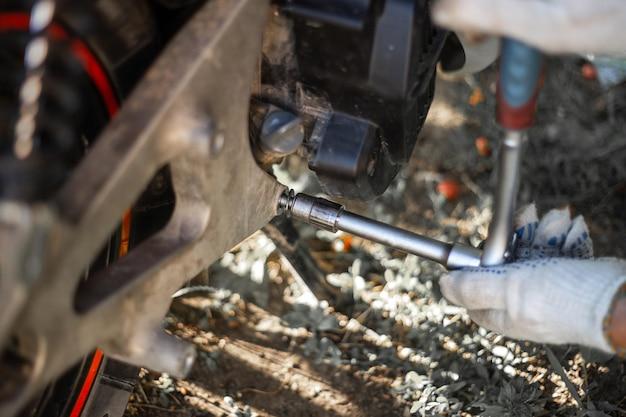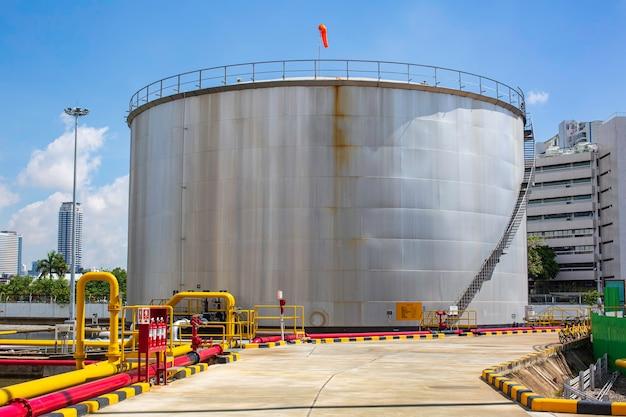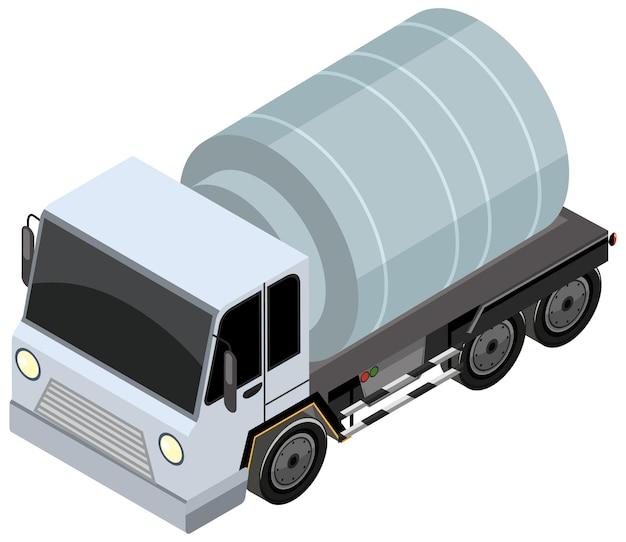If you own an older home, it’s likely that you still have an oil tank sitting somewhere on your property. While these tanks were once considered commonplace, they are now a source of environmental concern and can be expensive to remove properly. In this blog post, we’ll delve into the cost of oil tank removal and address some common questions like “Can I remove an oil tank myself?” and “How much does it cost to remove an oil tanker?” We’ll also look at options like “free oil tank removal” and whether or not you can leave an old oil tank in your basement. Read on for everything you need to know about removing an oil tank from your property.
Understanding the Cost of Oil Tank Removal
There’s nothing more unsightly than having an old and rusted oil tank sitting in your yard, draining you of your property’s value and tanking(heh!) your curb appeal. The best thing you can do in such a situation is to remove the oil tank, but before you do, it’s essential to understand the cost implications involved.
Pricing Factors
The cost of oil tank removal is determined by a variety of factors. Some of the crucial factors that determine the cost of oil tank removal include:
Location of the Tank
The location of the tank often plays a significant role in the overall cost of removal. If the oil tank is situated in a hard-to-reach area, such as a densely wooded area or on a steep incline, it will be more expensive to remove.
The Size of the Tank
The size of the tank is also another significant factor that determines the cost. The larger the tank, the higher the cost of removal.
Type of Soil
The type of soil in your yard can also impact the overall cost of removal. If your property has hard clay soil or rocky terrain, it can take longer to excavate the tank and, therefore, lead to increased costs.
Additional Costs
Apart from the factors mentioned above, there might be additional costs involved in oil tank removal, such as:
Soil Testing
Before removing the oil tank, you might need to conduct soil testing to identify any potential contamination that might have occurred. The cost of soil testing can vary, but it’s essential to factor it in when budgeting for oil tank removal.
Obtaining Permits
You might need to obtain permits from your local government or environmental agencies before removing the oil tank. These permits can attract additional fees that need to be factored into the cost of oil tank removal.
The cost of oil tank removal can vary depending on several factors. As a homeowner, it’s essential to consider all the critical factors before embarking on oil tank removal. With proper planning, you can ensure that the oil tank removal process is conducted efficiently and cost-effectively.
Free Oil Tank Removal: Is It Really Possible
If you’re like most people, you probably assume that anything with the word “free” in it is too good to be true. And when it comes to oil tank removal, you might think that it’s impossible to get it done without paying a small fortune. But what if we told you that there are actually some ways to get your oil tank removed for free?
Grants and Subsidies
One option for free oil tank removal is to look into grants and subsidies offered by your city, county, or state. These programs are designed to help homeowners who can’t afford to remove their oil tanks on their own. Typically, these grants will cover all or most of the cost of removal, depending on your income level and other factors.
Selling Your Oil Tank
Believe it or not, there are actually companies out there that will pay you to remove your oil tank. These companies will salvage any usable parts and then properly dispose of the tank itself. While you might not make a ton of money from this, it’s still a way to get your tank removed without paying for it yourself.
DIY Removal
Okay, we know this one isn’t technically “free,” but it’s still worth mentioning. If you’re handy and have some experience with home repairs, you can attempt to remove your oil tank yourself. This will require some specialized tools and equipment, but it can save you a lot of money compared to hiring a professional.
While it might seem like getting your oil tank removed for free is impossible, there are actually some options out there if you’re willing to do some research and put in a little bit of effort. Whether you go with a grant, sell your tank, or attempt a DIY removal, the key is to explore all of your options and find the one that works best for your budget and needs.
Can I remove an oil tank myself
So, you’ve got an oil tank that needs to be removed, huh? And you’re thinking, “Why not save a few bucks and do it myself?” Well, before you run out and rent a backhoe, let’s take a look at what you’re getting yourself into.
The short answer is no
Sorry to burst your bubble, but removing an oil tank is not as simple as popping a can of tuna. It’s a messy, complicated process that requires special equipment, permits, and expertise. Plus, there are environmental and safety risks to consider.
Environmental risks
Oil tanks are not just big containers that hold oil. They’re also potential environmental hazards. Over time, they can rust and leak, contaminating soil and groundwater with toxic chemicals. If you’re not careful, you could cause serious damage to your property and the environment.
Safety risks
Removing an oil tank is not a job for the faint of heart. It involves working with heavy equipment, hazardous materials, and potentially flammable substances. Without proper training and safety precautions, you could injure yourself or others, or even start a fire or explosion.
The cost of doing it wrong
If you think hiring a professional to remove your oil tank is expensive, just wait until you try to clean up the mess you made. A botched DIY job could cost you thousands of dollars in repairs and environmental remediation. Not to mention the legal consequences if you violate any zoning or environmental regulations.
In conclusion, unless you’re a trained professional with experience in oil tank removal, it’s best to leave this job to the experts. The cost of doing it yourself could far outweigh any potential savings. Play it safe and hire a licensed, insured contractor who knows how to get the job done right.
Can I Leave My Old Oil Tank in My Basement
Oil tanks are a common feature in many homes, especially those in colder climates where heating oil is used to keep homes warm during the winter months. However, over time, oil tanks can become obsolete or even dangerous. Whether you are replacing an old oil tank or simply want to get rid of it, you may be wondering if it’s safe to leave an old oil tank in your basement.
The Short Answer: No
Leaving an old oil tank in your basement can be dangerous for several reasons. For one thing, if the tank is not properly disposed of, it could leak oil into your home’s foundation or even the groundwater. This could lead to environmental contamination and harm to aquatic life. Additionally, oil tanks can pose a fire risk, especially if they are old and in poor condition. In short, leaving an old oil tank in your basement is not a good idea.
But What If It’s Empty
Even if your oil tank is empty, it’s still not a good idea to leave it in your basement. Over time, empty oil tanks can develop cracks or other damage that can lead to leaks. You may not notice these leaks until it’s too late, and by then, the damage to your home and the environment may already be done.
But I Don’t Want To Pay to Have It Removed
We understand that the cost of oil tank removal can be expensive, but it’s important to remember that the cost of not removing the tank can be even higher. A leaky oil tank can lead to costs associated with environmental cleanup, home repairs, and even health problems. It’s always better to be safe than sorry, so if you can’t afford to have your oil tank removed right away, start saving now.
In conclusion, leaving an old oil tank in your basement is not a good idea, even if it’s empty. The cost of removal may seem prohibitive, but the cost of not removing it can be even higher in the long run. If you have an old oil tank that needs to be removed, it’s best to act sooner rather than later.
How Much Does a 275-Gallon Oil Tank Cost
If you’re thinking of removing your oil tank, it’s vital to have an idea of the total cost you’ll incur. Most homeowners want to know how much it costs to remove their 275-gallon oil tank. However, there isn’t a ‘one size fits all’ answer to this question as different factors impact the total cost.
Factors Influencing the Cost of 275-Gallon Oil Tank
Soil Type
The soil type is one of the critical factors that determine the total cost of removing an oil tank. If you have sandy soil, it’s easier to remove the oil tank, and the cost will be lower. However, if the oil tank is buried in heavy clay soil, it will take more time and effort to remove it, raising the total cost.
Tank Access
Another factor is the accessibility of the tank. If the tank is easily accessible, it’s easier to remove it fast, which reduces the total cost. However, if the tank is located at a difficult-to-reach spot, the removal process will be time-consuming and require additional equipment, hence raising the total cost.
Tank Location
The location of the tank is an essential factor that affects the cost of removing the tank. If the tank is located in a tight space, like a basement, it will take more time to remove, and the total cost will be higher.
Contamination
An oil tank may leak, which can contaminate the soil and groundwater. If the oil tank is removed, and the area is contaminated, it will add to the cost of removing the tank.
How Much Does a 275-Gallon Oil Tank Cost
The cost of removing a 275-gallon oil tank varies depending on where you live. However, the average cost ranges between $500 to $3,000. Factors that may influence the total cost include those mentioned above, among other localized expenses.
In conclusion, knowing the cost of removing an oil tank is essential before embarking on the removal process. Although the price of removing a 275-gallon oil tank varies by location and factors such as soil type, tank accessibility, tank location, and contamination, having an idea of the average cost before removal will help you budget and avoid any surprises.
How Much Does it Cost to Remove an Oil Tanker
So, you’ve finally decided to bid farewell to your old oil tanker, and you’re curious about the cost of removing it. Well, you’ve come to the right place because we’ll break it down for you with a bit of humor to make the process less daunting.
Size Actually Matters
The first thing that will impact the cost of removing your oil tanker is its size. An old, rusted, small-sized tank will cost less to remove compared to a more massive, newer one. The larger the tanker, the higher the removal cost, so size does indeed matter.
Location, Location
Another crucial factor that affects the cost of removing your oil tanker is its location. If your oil tank is underground, it will cost more to remove as it requires more time, equipment, and manpower. On the other hand, if it’s above ground, removal costs will be relatively lower.
Permits and Regulations
Before removing your oil tanker, ensure you have the necessary permits and are compliant with local regulations. You don’t want to face hefty fines and penalties for non-compliance and causing environmental harm. Be sure to factor in permit fees and any additional costs that might arise from complying with regulations.
Cost Range
The average cost of removing an oil tanker falls between $1000 and $5000. However, the costs can vary significantly depending on the above factors such as size and location. It’s always wise to get several quotations from reputable companies to compare and make an informed decision.
Conclusion
We hope this subsection has shed some light on the cost of removing an oil tanker. Remember, the secret lies in scheduling removal as soon as you decide to retire your oil tanker. Leaving it to rust away will only cost you more in the long run, and worse still, lead to environmental damage.



